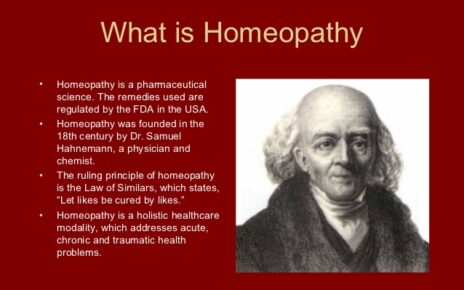Benefits of Onion and Garlic?

As seasonings, onion and garlic impart pungent, spicy flavor to food and are staple spices in many cuisines. But these vegetables do more than just make your food tastier. Eating them has been linked to numerous health benefits, including lowered cholesterol, blood pressure and cancer risk.
Allium Vegetables and Cancer Prevention
Onion and garlic belong to the allium vegetable family, which also includes leek, scallion, shallot and chive. Alliums have been used for their medicinal and culinary properties for over 4,000 years, according to a March 2015 study in Cancer Prevention Research. Ancient texts from Rome, China, Egypt, India and Greece cite medicinal uses for allium vegetables, including onion and garlic.
According to Cancer Prevention Research, some associations have been shown between eating allium vegetables and decreased risk of cancer, particularly gastrointestinal cancer. The majority of the evidence supporting this link come from mechanistic studies, which focus on administering prepared extracts of allium vegetables and the effects of individual sulfur-containing compounds found in these vegetables.
According to Oregon State University, allium vegetables are the richest sources of organosulfur compounds in the human diet. These compounds are thought to be responsible for garlic’s aroma, flavor and some of its potential health benefits. An August 2019 umbrella review in Food Science and Nutrition corroborates these findings on allium vegetables and cancer. According to the review, allium vegetables might be beneficial for cancer prevention, and the most beneficial cancer-related outcome was shown for gastric cancer.
Benefits of Onion and Garlic & Other Health Benefits
Besides decreasing cancer risk, eating onion and garlic has been linked to a slew of other health benefits. Of the two vegetables, there is staggeringly more research on garlic. For example, the Food Science and Nutrition umbrella review on allium vegetable consumption found several strong links between eating garlic and health outcomes.
For instance, eating this flavorful vegetable for over eight weeks significantly decreased total cholesterol in both healthy patients and patients with high cholesterol. The same review found that eating garlic also lowered fasting blood glucose in people with diabetes and had a large effect on lowering both systolic and diastolic blood pressure in people with hypertension.
Lastly, this review also found that consuming garlic lowers inflammation in the body — specifically, eating the vegetable lowered C‐reactive protein, an inflammatory marker. If you want to lower your cholesterol, blood pressure or the amount of inflammation in your body, adding garlic to your diet might be a safe and easy way to get the results you’re seeking.
According to the same review, onion and garlic share many properties, such as containing flavonoids and polyphenols, which are plant compounds with antioxidant properties that could help you ward off degenerative disease. In one study included in this review, flavonoids extracted from onion seemed to inhibit colorectal cancer and decrease hyperlipidemia, a condition in which there are high levels of fat particles in the blood.
Read more: Which Is Healthier, Raw or Cooked Garlic?
Onion and Garlic Nutrition
Just by adding a single slice of onion to your sandwich, you can up the vitamin and mineral content of your meal without significantly increasing its calorie content. According to the USDA, one large slice of raw onion contains only 15 calories, zero cholesterol and nearly zero fat. This same serving also contains:
- 0.42 grams of protein
- 0.65 grams of fiber
- 1.61 grams of sugar
- 8.75 milligrams of calcium (0.9 percent of your daily value)
- 11 milligrams of phosphorous (1.1 percent of DV)
- 55.5 milligrams of potassium (1.6 percent of DV)
- 2.81 milligrams of vitamin C (4.7 percent of DV)
- 7.22 micrograms of folate (1.8 percent of DV)
Read more: 10 Incredible Garlic Hacks
Adding just a bit of garlic to your pasta or stir fry can also improve both the flavor and nutrition of your meal. According to the USDA, three cloves of garlic contain only 13 calories, zero cholesterol and nearly zero fat — 0.05 grams to be exact. This same serving also contains:
- 0.57 grams of protein
- 0.19 grams of fiber
- 0.09 grams of sugar
- 16.3 milligrams of calcium (1.6 percent of DV)
- 13.8 milligrams of phosphorous (1.4 percent of DV)
- 36.1 milligrams of potassium (1 percent of DV)
- 1.28 micrograms of selenium (1.8 percent of DV)
- 2.81 milligrams of vitamin C (4.7 percent of DV)
As you can see, adding just a little bit of onion and garlic to your meals throughout the day can help increase your fiber, vitamin and mineral intake. According to the Food and Drug Administration, your body needs calcium — which both onion and garlic are rich in — for healthy nervous system function, hormone secretion, muscle contraction, blood clotting and bone and teeth formation. Both onion and garlic are also rich in vitamin C, which supports healthy immune system function, wound healing and collagen and connective tissue formation.
You can find many recipes online that use onion and garlic, both as seasonings and as main ingredients. We love this recipe for “Baby Arugula, Fig Jam & Caramelized Onion Pizza,” which incorporates sweet caramelized onions as a main topping and garlic as a seasoning. As an added bonus, if you’re lactose-intolerant and are craving a savory pizza, this is a great recipe for you, as it doesn’t call for cheese.
Garlic in particular also goes well with roasted vegetables of all kinds. This easy and delicious LIVESTRONG.com recipe for roasted garlic cauliflower, for example, calls for just cauliflower, salt, pepper, olive oil and two garlic cloves. Top with an herb of your choosing — such as parsley, rosemary or thyme — for an added pop of flavor.
Read more: Onions and Indigestion
Precautions and Risks
Garlic is generally safe to eat, but some mild side effects have been reported. According to Oregon State University, the most common reported side effects of eating garlic and taking garlic supplements are bad breath and body odor. Some people have also reported gastrointestinal issues such as constipation, nausea, flatulence, diarrhea and vomiting.
Eating garlic in certain forms might also interact with some medications. According to Penn State Health Milton S. Hershey Medical Center, ingesting garlic may interact with nonsteroidal anti-inflammatory drugs, blood-thinning medications, medications for HIV and AIDS, birth control pills and a few others. Speak to your doctor before taking garlic supplements or increasing how much of it you eat to be safe.
When it comes to eating onions, their tear-jerking smell might be your biggest risk. No significant side effects to eating them have been reported, according to the Food Science and Nutrition umbrella review. We hope you enjoy adding these two delicious vegetables to your diet; it’s clear that they can be a benefit to your health.










